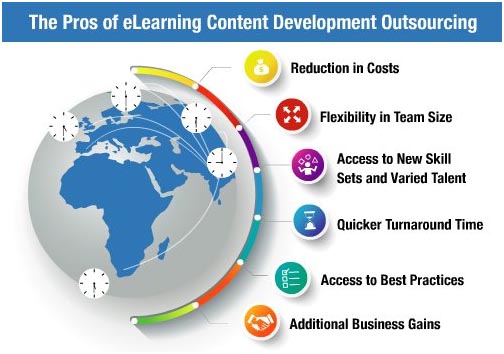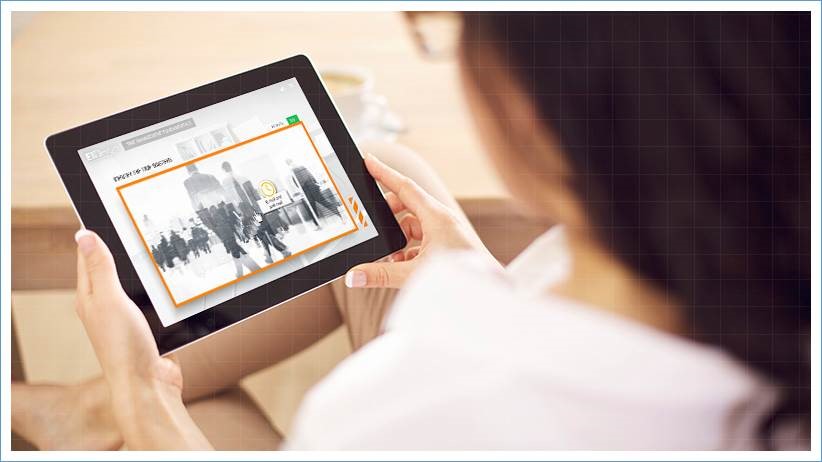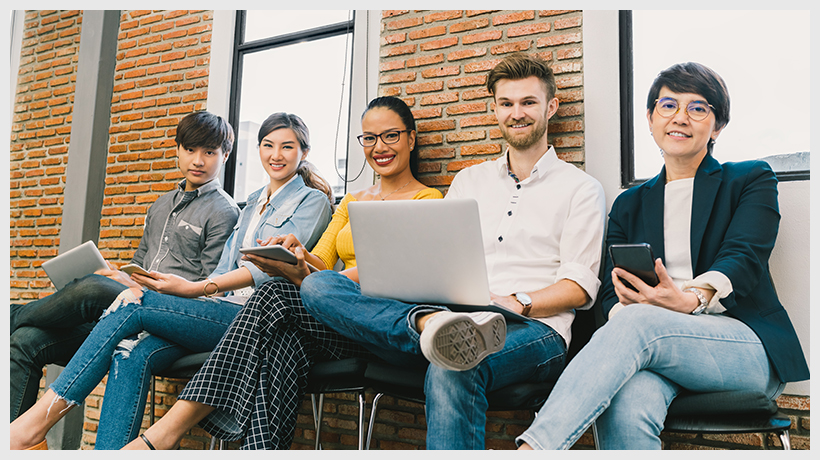
L&D professionals occasionally grapple with the subtleties of learner and learning experiences. In this article, I outline what each aspect signifies, what are the differences, and share strategies using both to create effective learning programs.
What Is the Learner Experience?
The world has seen an expansion to virtual working and learning. If you ask typical eLearners what their “experience” has been with a course, they’ll likely talk about what they learned and how much they liked (or disliked!) what was taught. This feedback is a binary way of expressing their experiences.
Their likes or dislikes about certain aspects of learning are only part of – but not the entirety of a learner’s experience.
In fact, a learner’s experiences encompass more than just the content they’ve learned. It entails everything related to the act of learning – from where, how, and when they interacted with the learning environment, to how the curriculum is structured, and methods used to present the subject.
- In that sense, learner experience refers to everything a learner encountered along her/his personal learning pathway.
- It includes the fun (or stress) she/he may have experienced through her/his learning journey.
- It factors the social interactions associated with learning.
- And it considers the interactivity aspects along that journey.
Why is Learners’ Experience Important?
The importance of learners’ experience in educational and training settings cannot be overstated. This is due to its profound impact on both the effectiveness of learning and the motivation of the learners. Here’s why it matters:
- Enhances Engagement and Retention: A positive learning experience directly correlates with higher engagement levels, leading to better retention of information.
- Caters to Individual Learning Styles: Recognizing and accommodating different learning styles ensures that all learners can absorb and process information in the way that suits them best.
- Fosters a Positive Attitude Towards Learning: Enjoyable and fulfilling learning experiences cultivate a lifelong love for learning and curiosity.
- Boosts Performance and Achievement: Learners who have a positive experience are more likely to perform better academically or in a professional context.
- Encourages Continual Learning and Development: A good learning experience motivates learners to pursue further education and personal development.
Key Components of a Learner Experience
To create an impactful learner experience, it’s essential to consider the following key components:
- Content Relevance: Ensuring the learning material is relevant and aligned with learners’ goals and needs.
- Engagement Strategies: Utilizing interactive and varied teaching methods to keep learners engaged and motivated.
- Feedback and Support: Providing regular, constructive feedback and support to guide learners through their educational journey.
- Accessible Learning Materials: Making sure all learning materials are easily accessible to learners, catering to different needs and preferences.
- Technology Integration: Effectively using technology to enhance learning, such as through e-learning platforms or multimedia resources.
- Collaborative Opportunities: Encouraging collaboration among learners to foster a sense of community and shared learning.
- Personalization: Tailoring the learning experience to individual learner profiles, interests, and learning styles.
- Safe and Inclusive Environment: Creating an environment where all learners feel safe, valued, and included.
What Is the Learning Experience?
Similar to an eLearner’s overall experience, the learning experience goes beyond a binary interaction with the Learning Management System (LMS).
- It is a much broader term and defines multiple facets of experiences between learners and their learning environment.
- It encompasses every interaction a learner has with the program or course he/she attends and the experiences generated along that pathway.
To provide a good learning experience, learners should progressively go through multiple stages of their learning journey.
- That path typically commences with awareness building and consciousness of the need for learning.
- A learner flows seamlessly through a stage of successfully consuming appropriate learning content to meet her/his learning needs.
- But the purview of the learning experience doesn’t end there. It expands into the domain of successful application of skills learned to the job and culminates with demonstrable on-the-job behavioral change.
Why Are Both Learner Experience and Learning Experience Key for Creating Effective Learning and Development Programs?
The key to providing employees with a long, successful, and rewarding career at the company lies in offering them continuous learning opportunities through a memorable learner experience.
With so many from the workforce working and learning remotely today, learning dynamics have changed. The usual adage of “Build it and they will learn” just doesn’t cut it anymore!
L&D teams must therefore take a holistic, learner-centric approach when creating those opportunities. To do that, both learner experience and learning experience are key components for building effective and immersive learning and development programs. Focusing on only one of these aspects risks producing learning solutions that do not provide learners with both memorable learning and performance improvements.
Importance of Learning Experience and How It Impacts Learner Engagement
Understanding the importance of learning experience is crucial in enhancing learner engagement in educational and training programs. The learning experience encompasses all aspects of the learning process, from the content and delivery method to the learning environment and technology used. Here’s how it significantly influences learner engagement:
Enhanced Engagement Through Relevant and Interactive Content
- Personalized Content: Tailoring learning materials to meet individual needs and interests boosts engagement.
- Interactive Elements: Incorporating interactive elements like quizzes, simulations, and discussions keeps learners active and involved.
Improved Motivation with Goal-Oriented Learning
- Clear Objectives: Setting clear, achievable learning objectives helps learners understand the purpose of their learning journey.
- Progress Tracking: Tools that allow learners to track their progress provide a sense of accomplishment and motivation.
Building a Supportive Learning Community
- Collaborative Learning: Encouraging group activities and discussions fosters a sense of community and shared learning.
- Peer Feedback and Support: Creating channels for peer-to-peer feedback and support enhances the overall learning experience.
Leveraging Technology for Enhanced Learning Experiences
- Advanced Learning Platforms: Utilizing modern LMS and other e-learning tools can make learning more accessible and efficient.
- Multimedia Resources: Integrating various forms of media (videos, podcasts, infographics) caters to different learning styles and keeps content engaging.
What Strategies Can Help You Create Great Learner Experiences?
The following strategies can help deliver exceptional learner experiences:
- Learning anytime, anywhere: To deliver good experiences to your learners, it’s important to not make the timeframes around learning rigid. This is especially essential in today’s work-from-home environment, where employees often work on personal time and request managerial flexibility to attend to personal commitments during traditional working hours. Allowing eLearners to consume content anytime, anywhere helps provide a better learner experience.
- Available on demand: Learning “convenience” is another aspect of the entire experience that learners crave for. Learning at the point of need, learning in support of a specific performance objective, and learning just in time to deal with a work challenge all go to building an exceptional learner experience.
- Learner centricity and personalization: A good learner experience doesn’t happen through a one-size-fits-all approach. Cookie-cutters just won’t cut it! The learning program must cater to unique learner requirements and needs and must entail personalization to support those needs.
- The “learning pathways” must map to the “career pathways”: Career pathways are planned keeping in mind the employees’ future progression through various organizational roles. And, to support that progression, employees will likely require learning support. That support will come from learning pathways. Both pathways must map to each other to create an exceptional learner experience.
What Strategies Can Help You Create Great Learning Experiences?
The following strategies can help deliver exceptional learning experiences:
-
Immersive and engaging:
Connecting learners with real-world experiences, using story based scenarios, gamification and game-based learning, Virtual Reality (VR), Augmented Reality (AR), and Mixed Reality (MR) – all help in producing a great learning experience.
-
Experiential learning:
Designing active learning programs, where learners proactively participate in the learning process – as opposed to listening and understanding – helps build a good learning experience. Learning simulations, interactive assignments, and situational learning help learning by doing and through reflection.
-
Available within their workflow and should help them perform better:
Integrating learning within a learner’s workflow is a great way to deliver a positive learning experience. Rather than waiting for scheduled courses, or scheduling learning opportunities based on an instructor’s availability, use point-of-need learning and offer learning with performance support tools.
-
Social and collaborative learning:
With employees spending a lot of time on social platforms, including with peers, colleagues, and co-workers, it makes sense to deliver a compelling learning experience by integrating social learning. Designing social learning activities, where learners must cooperate and collaborate, also helps produce engaging experiences for eLearners.
-
SDL and continuous learning:
Self-Directed Learning (SDL), as opposed to mandated or forced learning, often makes learners more receptive to learning. In addition, offering learners opportunities to further their learning throughout their careers – e.g., mapping career paths with learning paths – ensures a performance-enhancing, rewarding learning experience.
Parting Thoughts
At first glance, learner experience and learning experience seem to indicate the same thing. However, to seasoned L&D professionals, they’re not. In some ways, the two terms could be used interchangeably, though they have subtle differences. In that respect, they’re different sides of the same coin – but the underlined point is “different.”
Given the current trend of hybrid work and learning, understanding these differences is crucial for training teams when crafting impactful and immersive learning content. Understanding what learner and learning experiences mean, and why they are both important, can go a long way in creating effective learning programs.
I hope the strategies discussed in this article will give L&D professionals a head start in creating exceptional learner experiences and learning experiences.



